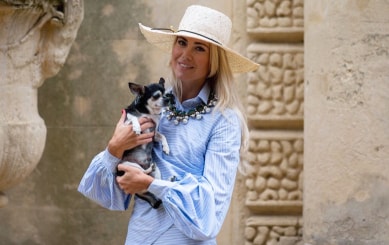In one of my previous stories I wrote about natural ways to stay fit. Indeed, living in London doesn’t make it easy for outdoor sports enthusiasts, especially, if like me, you’re an office bunny who primarily has to resort to the local gym after work. Even my motivation has its limits, however, and after a while it becomes a dull and repetitive routine, which doesn’t actually give you any extra sense of accomplishment but more so just a means to maintain the desired body shape and keep you squeezing into those skinny jeans.
In between workouts I dedicate a lot of time to the reading of eastern philosophy and yogi practices, often fantasising about embarking on an incredible expedition to faraway lands. Perhaps I was inspired by movies like Indiana Jones, The Mummy and even the great writers of antiquity. Geoffrey Chaucer’s Canterbury Tales always filled me with an overpowering desire to explore.
When I was about 23, a friend of mine spent a year galavanting around South America. She told me about the Inca Trail and all of her adventures and I must confess I was jealous – the only excitement I got during those years was multiple computer screens with Bloomberg news and graphs beaming back at me. This supercharged sense of adventure, which had been present in me since childhood, fuelled by my father’s rather unorthodox ideas, continued to build over the years. So, 10 years later, I decided to embark on my very own journey to Peru and on the “Salkantay” trek.
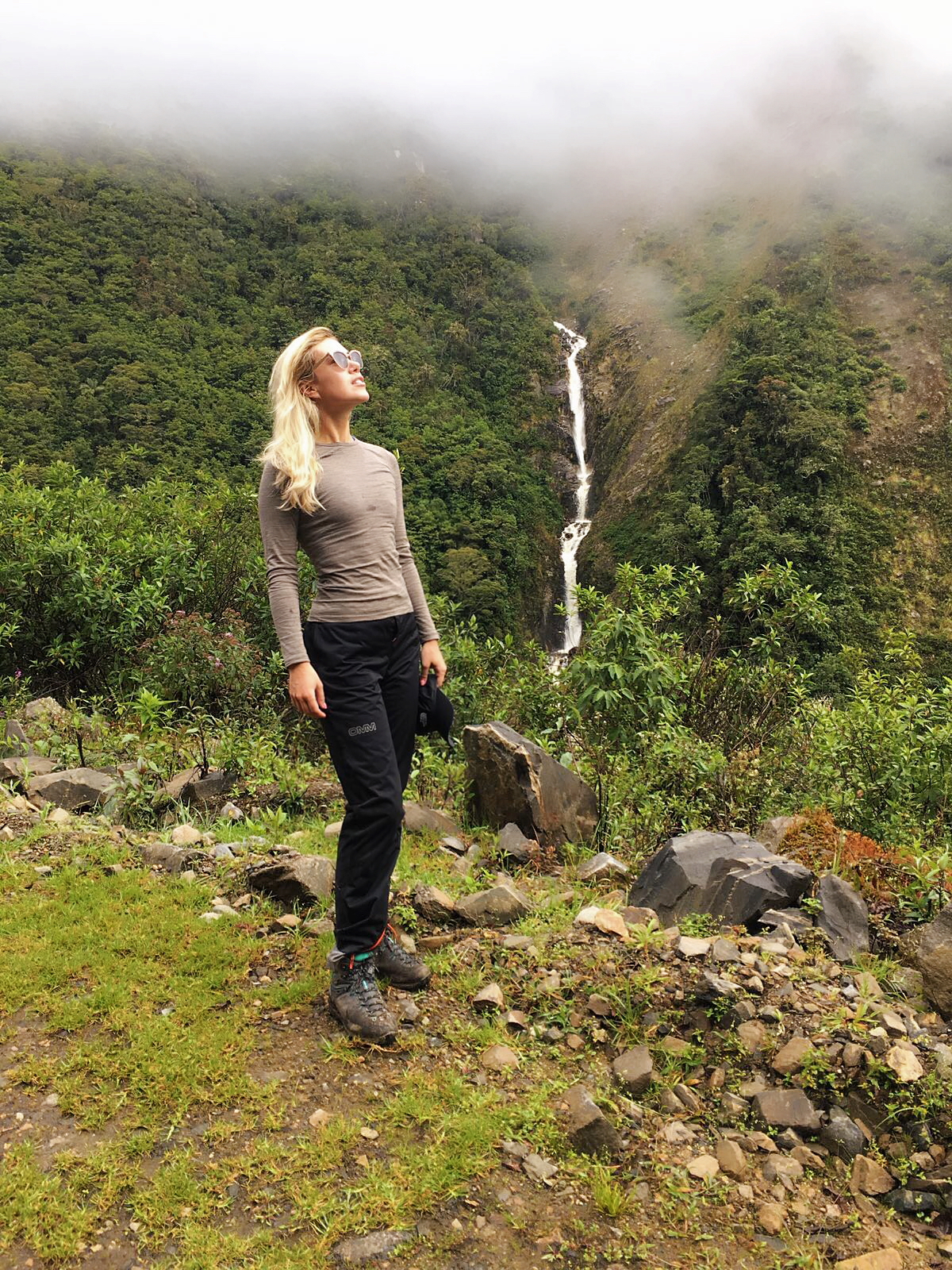
After a couple of days acclimatising in and around Cusco, my friend Maria and I were ready to start the four-day trek. We opted for www.salkantay-trek.com trekking company after checking out some great reviews on Trip Advisor. It’s one of the first companies to come up in a Google search too, so we felt assured we would be looked after.
The night before the expedition we met the team who would be going with us, amongst them was a newly-wed couple from Ohio, two guys from Chile (who we later learned came most prepared), a young guy from Quebec, one from Montreal, a student girl from Holland, a mother and son from Mexico and another couple from the UK. Each of us was given a duffle bag for extra stuff, which you would only get at the end of each trekking day, as what you were allowed to take up the mountain was limited and I only carried a 35 litre bag. Sleeping bags, tents, food and the other necessities required on the campsite were all provided by the company.

At 4am on the first day, we were greeted by Freddy, our main guide. And usually there are two! Willy was the other, who was fresher to the company as he has only been there a year. The three-hour ride to Challacancha passed very quickly, probably due to the excitement of the impending climb. After arriving at the departure point, we were introduced to our horsemen, porters and cook staff. We caught our first glimpse at Mt Salkantay (meaning Wild Mountain in Quechua) and Freddy made a joke about the first day being mere practice for the journey ahead. Turns out it wasn’t joke!
It was about three hours to the campsite, fairly flat and easy on the legs. After tucking into lunch there, we embarked on another two-hour journey to the Humantay Lake and back. The view from Humantay was, for want of a better word, magical. The imposing glacier melts freezing cold water into a beautiful lake lagoon, giving off the most brilliant hues of blue and green I have ever seen.

Some braved a quick dip in the icy water before making the journey back, and our energetic Chilean compadres ran around the lake twice before the last person had even made it there!

We had fantastic dinner followed by Coco tea, which is recommended to drink at high altitude, and dosed off in our igloo-inspired tents.

The following morning we set off to Salkantay. Not even the rain could ruin our astonishment at the breath-taking landscape we came across. An emerald green valley sparkled with tumbling waterfalls and mules, which our guide called “wild domesticated,” roamed the landscape freely. It was just like something out of an adventure movie.
It’s a difficult push uphill to the peak. There are rocky watersheds to pass, as well as the steadily increasing altitude, so some opted for the horses. It was comforting to know that the option was available, and both of our guides were carrying oxygen tanks.

Reaching the top the temperatures dropped dramatically, from around 20C at the bottom of the mountain to -5C at the top. I was shivering from cold and tiredness. My fingertips went numb even with a good pair of gloves. Nonetheless, reaching the top provided the most amazing feeling of accomplishment. You know then that you have conquered the most difficult part, and after that it’s all down to discipline and persistence.

Shivering from cold, yet joyous from the achievement having made it to the top, Maria and I had our very own Ayni Despacho ceremony. For hundreds of years high shaman or wisdom-keepers from the Q’ero lineage of Peru have used the Ayni Despacho ceremonies to bring positive energy and harmony. So it was our turn to replicate the ceremonial tradition and say thank you to mother nature for everything that we have. It made be feel very content and peaceful.
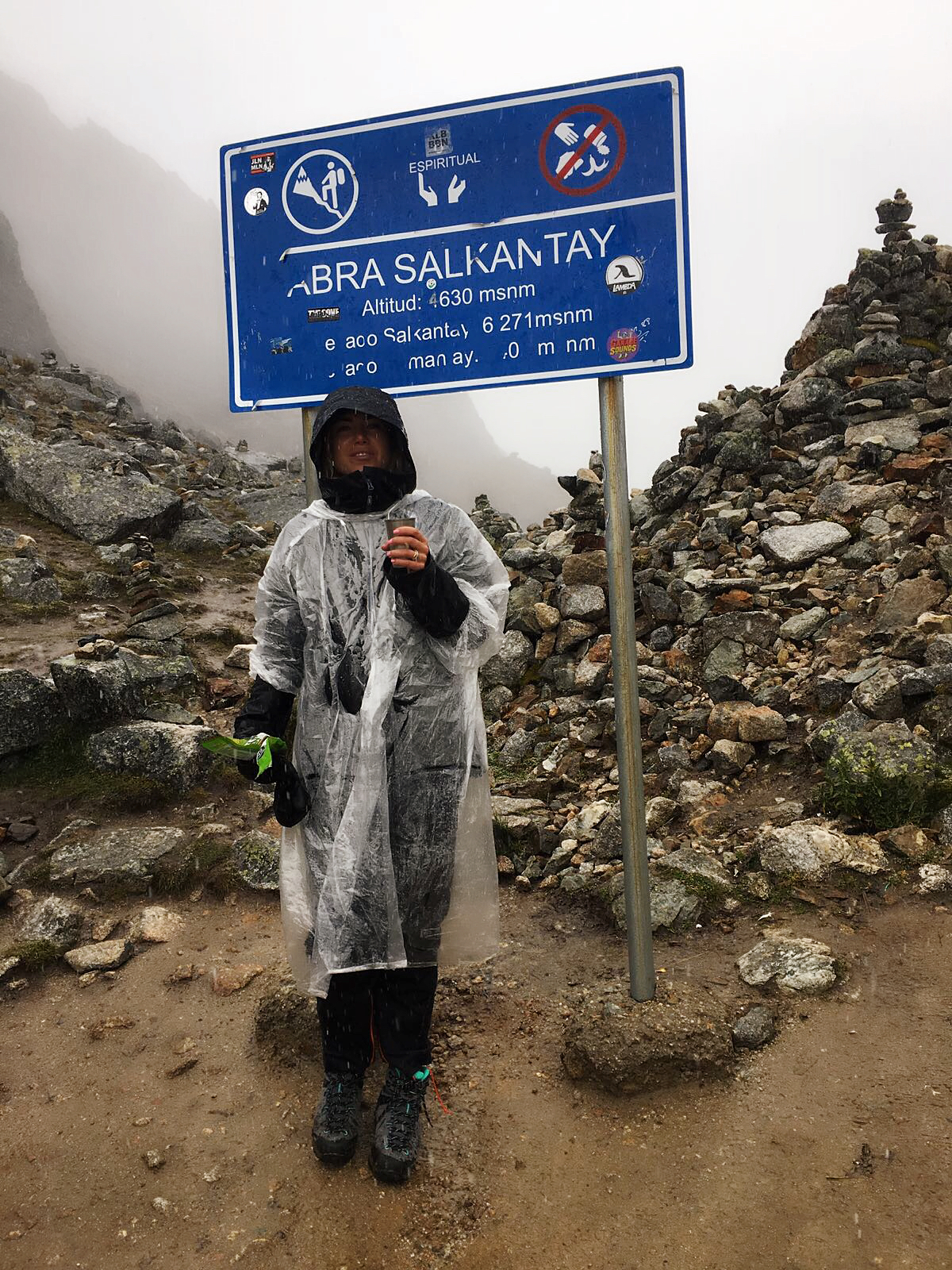
The descent proved to be rather difficult as well. Lots of loose rock and frequent micro landslides really take a toll on your knees. I wore knee braces for extra comfort. Unfortunately we were rather unlucky with the weather, as it was raining and foggy until we reached the jungle ahead of our campsite at Chaullay. Exhausted and hungry, a distant glimpse of our campsite was a welcome sight. The second day seemed like the most tiring day in the world!
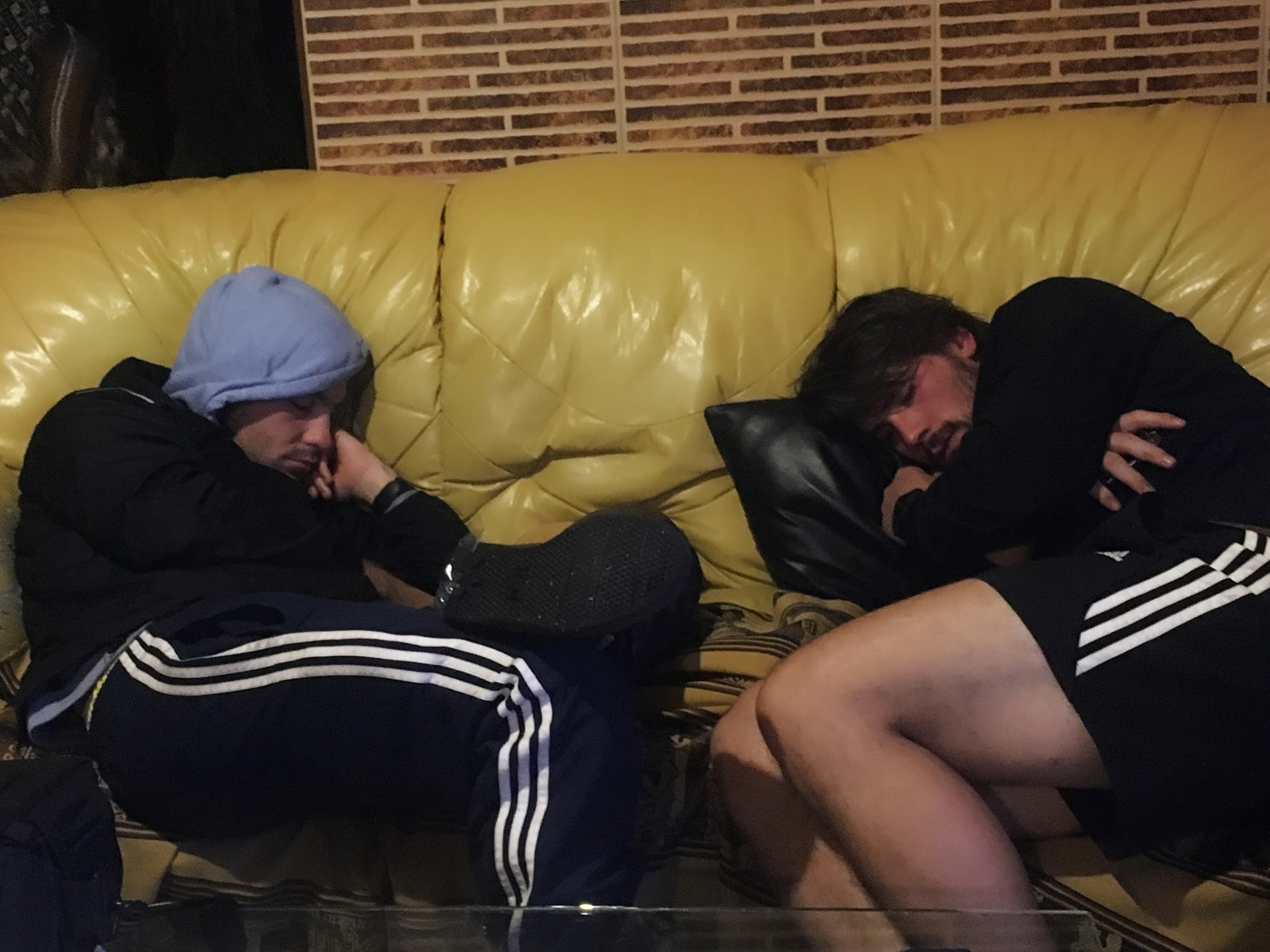
After being in the middle of nowhere, our first sign that we were returning to civilization was a power line far off in the distance and WIFI for which we paid 10 Peruvian Sols to the locals. We had a delicious three course meal, consisting of corn soup, chicken, potato wraps (Freddy told us they have over a thousand different potatoes in the region ) and of course it was followed by Coco tea.
The final push to Aguas Calientes seemed like it should have been easy. First you go downhill from Llactapata to the river valley, then you cross over the hydroelectric station before following the rail tracks into town. However it proved to be a challenge, again, in its own unique way. We were fatigued from the previous days, and this day wasn’t especially interesting compared to them. We followed the tracks seemingly forever, and lots of loose rock made it more stressful than leisurely in all honesty.
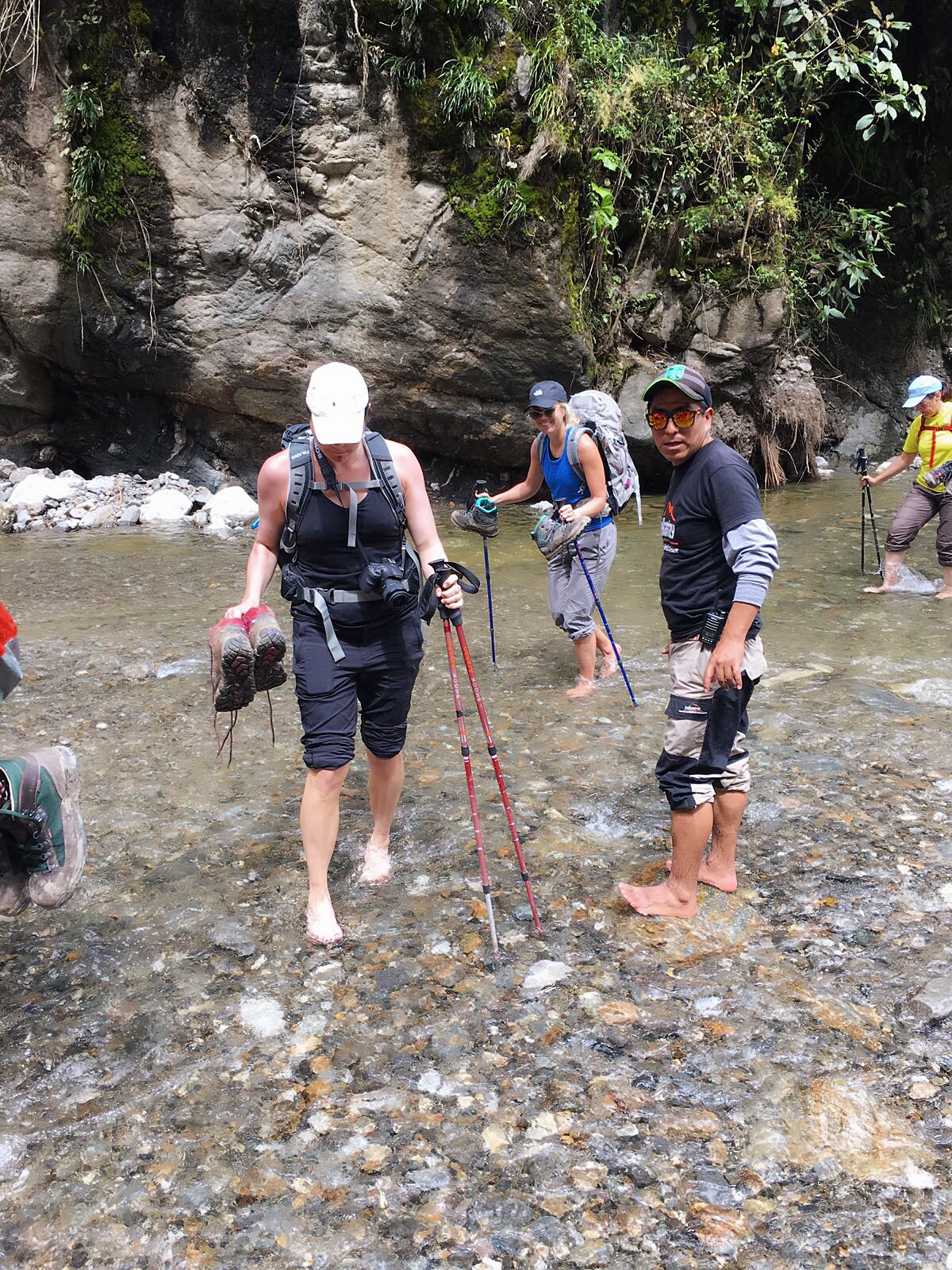
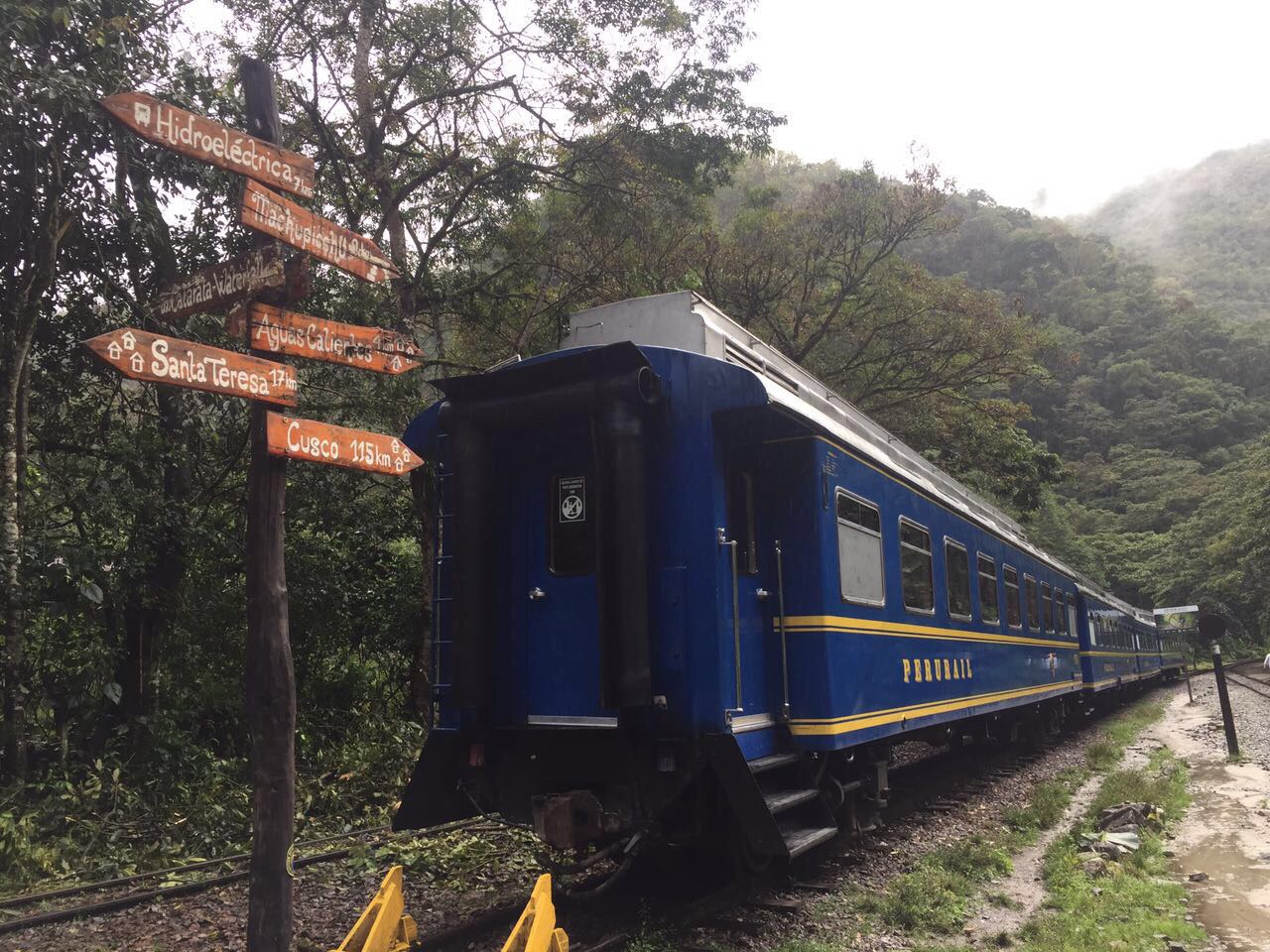
At Aguas Calientes, finally we reached a hotel. Maria and I were overjoyed to have our first hot shower in days! And even though it wasn’t a 5-star resort we were more than happy. We had a good night out that evening in the town. Some beer and Pisco helped to ease the pain we now felt everywhere.
The next morning we set off to Machu Picchu on our final day of the expedition.
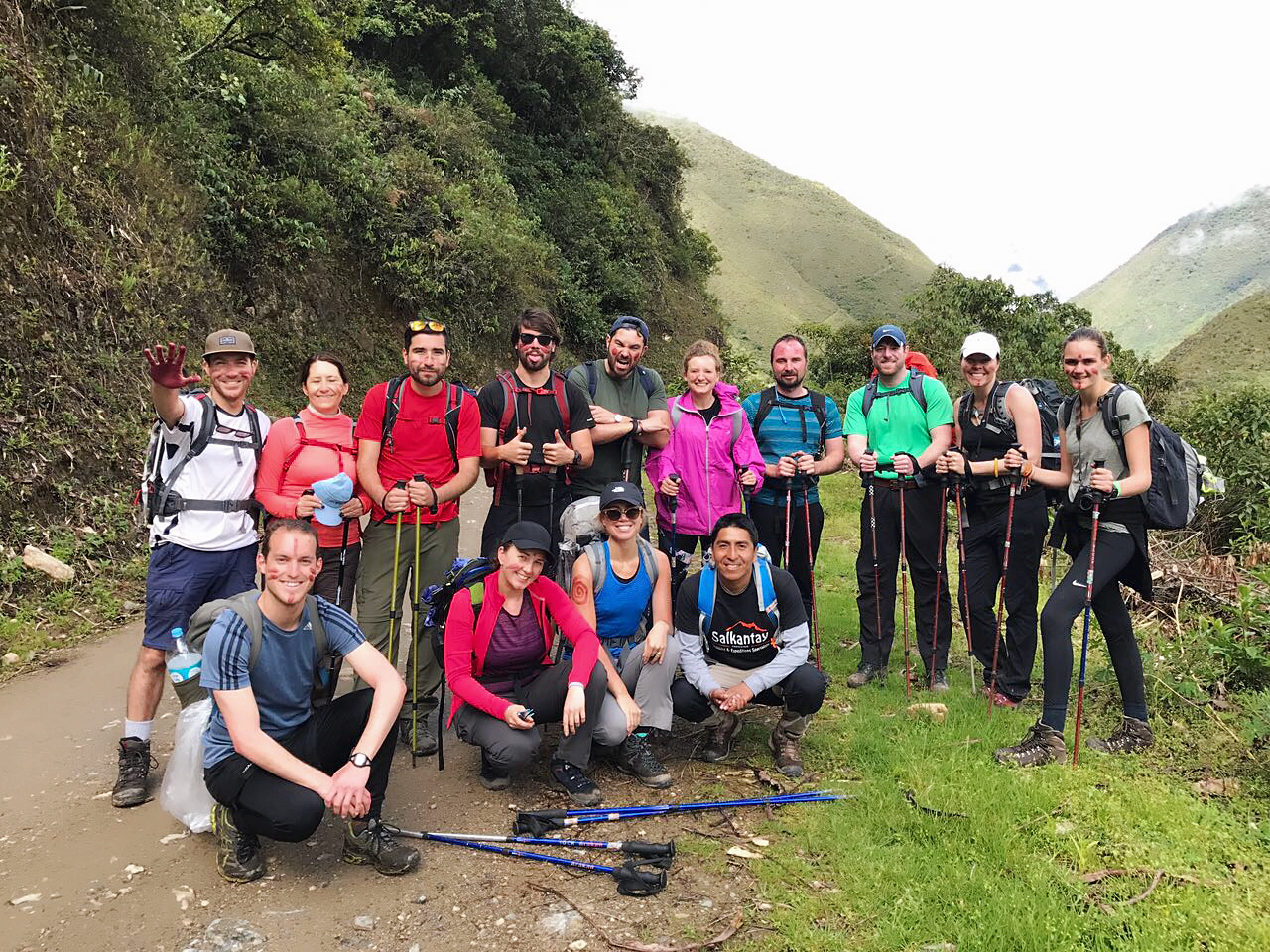
Machu Picchu, which means “old mountain” in the Quechua language is a 550-year old citadel built by the most advanced pre-Columbian society (more about this in my next story). It is located in the spectacular setting of a saddle between two Andean peaks that has been preserved enough to be recognisable as a city. It is high, but not as high as Salkantay, at 2,430m above sea level. We explored the ancient city and its ruins.
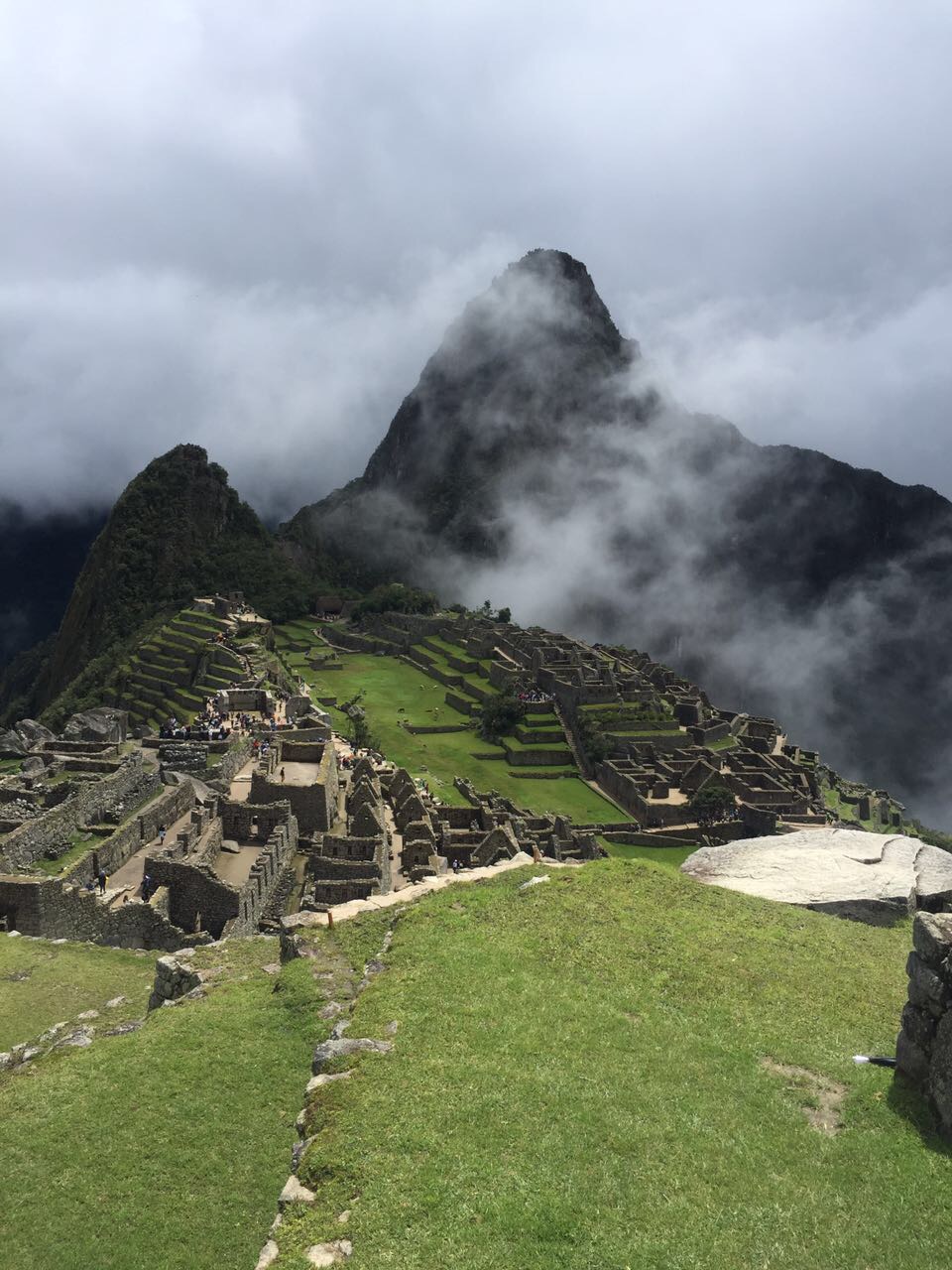
We revelled in the story of Hiram Bingham, the American historian who discovered the place in 1911, carefully told by our guide.

After that we had the option to climb Machu – the only way to the top is by climbing an uncountable number of stairs so we only made it half way. And as the day was very foggy we were told the view we get from half way up the mountain would be the same as on the top – fog, clouds and more fog.

The whole place is filled with an enchanting sense of the mysterious: we know its functions were partly residential and partly religious and there is still a lot of guessing about its cosmic positioning and its academic importance to the Incas. Machu Picchu is also, of course, a very touristy place. Over a million tourists visit every year which has made it very commercial. I therefore didn’t feel any special energy or cosmic connection, but rather I was consumed by the endless chatter and noise created by seemingly endless groups of tour groups.
The stories told to tourists about Machu Picchu tend to be rather conservative. I guess it’s the official version. Personally, I felt more empowered and connected up on the mountain and amongst nature than I did at Machu Picchu itself, but you’ll have to read my next story to find out about the shamanic practices, ancient prophecies and the ever-elusive Inca stones!


